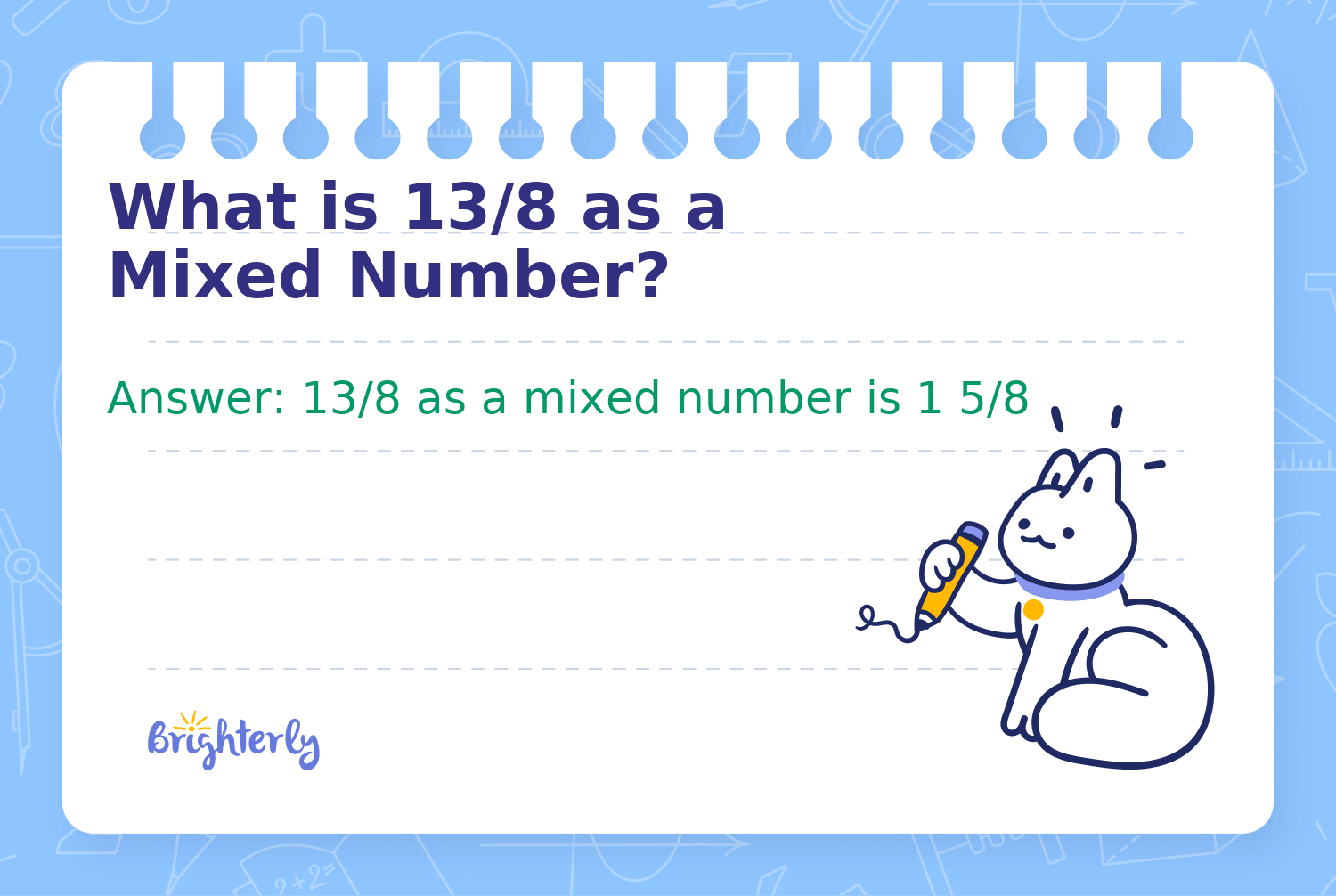
Reviewed by Camille Ira B. Mendoza
What is 13/8 as a Mixed Number?
Answer: 13/8 as a mixed number is 1 5/8
When a fraction’s numerator is greater than its denominator, it is called an improper fraction. Converting improper fractions to mixed numbers helps express the same value in a more intuitive way, combining a whole number with a proper fraction. Let's see how to convert 13/8 to a mixed number.
Methods
Math Tutor Explanation Using the Division Method
This method divides the numerator by the denominator and uses the result to find the mixed number.
Step 1: Step 1: Divide 13 by 8 to find how many whole times 8 fits in 13
Step 2: Step 2: The quotient (1) is the whole number and the remainder (5) is the numerator of the proper fraction
Math Tutor Explanation Using Fraction Decomposition
This method separates the improper fraction into a sum of a whole number and a proper fraction.
Step 1: Step 1: Break 13 into 8 and 5 so that 13/8 = (8/8) + (5/8)
Step 2: Step 2: Simplify 8/8 to 1
Step 1:
Step 2:
Math Tutor suggests: Practice More Mixed Numbers and Fraction Conversions
Keep improving your understanding of mixed numbers by working through these related exercises.
FAQ on Improper and Mixed Numbers
What is an improper fraction?
An improper fraction has a numerator greater than or equal to its denominator.
How do you convert an improper fraction to a mixed number?
Divide the numerator by the denominator, write the quotient as the whole number, and the remainder as the numerator of the new fraction.
Can every improper fraction be written as a mixed number?
Yes, every improper fraction can be converted to a mixed number.
Why convert improper fractions to mixed numbers?
Mixed numbers are often easier to read and interpret, especially when measuring or in real-life scenarios.
What if the numerator divides evenly by the denominator?
If there is no remainder, the result is a whole number, not a mixed number.


